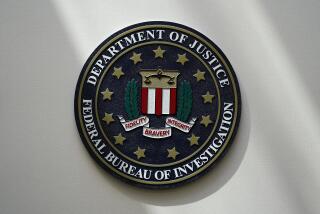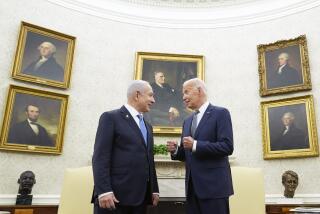Who the heck is WikiLeaks?
- Share via
The publication this week by the New York Times and others of excerpts from a six-year archive of classified documents generated by U.S. military operations in Afghanistan raises a number of provocative questions about news organizations’ ethical obligations in the Digital Age.
The tens of thousands of reports provide a kind of ground-level account of the Afghan war between the beginning of 2004 and the end of 2009. Unlike the Pentagon Papers, to which they’ve been erroneously compared, the documents published simultaneously by the Times, the Guardian in London and Der Spiegel in Germany do not reveal any pattern of governmental mendacity. All three organizations were given access to the documents a month ago by an online organization called WikiLeaks, which required that publication be withheld until Sunday, so it could post the raw documents on its website.
That’s where the questions begin to arise: According to a note published Monday along with its stories, the Times acknowledged that it does not know where WikiLeaks obtained the secret reports. The site’s founder — a convicted Australian computer hacker named Julian Assange — has refused to say and hints that WikiLeaks may not know. Maybe. Still, it’s extraordinary for a paper like the Times to proceed with stories like these, without actually knowing the source of its information. Similarly, we know virtually nothing of who is involved in WikiLeaks or what their agendas, beyond a generalized distaste for secrets, may be.
The Times apparently went to great lengths to cross-check items it published, and according to Washington bureau chief Dean Baquet, it checked the material with the White House. The Times’ note indicates that reports were redacted to eliminate “anything that was likely to put lives at risk or jeopardize military or anti-terrorist operations.” The paper also was at pains to point out that it hadn’t linked to WikiLeaks’ archive of the raw reports. (That one rings a little hollow. So many people flocked to the site Monday that it crashed.)
Still, the Times’ entire explanatory note is couched in the editorial “we,” and in a story this unusually sourced and involving this many official secrets, it would have been nice to know exactly who participated in the Times’ internal discussions leading to publication and what considerations they weighed. Did anybody have reservations about dealing with WikiLeaks? What were they? Is there a public interest in knowing that, just as there is in knowing about the conduct of the Afghan war?
WikiLeaks emerges with a great deal of credibility from all this, and other journalistic organizations now will be eager to work with them — whoever they are. Though the Times appears to have dealt with them with great care, there’s no guarantee others will. Frankly, the whole bunch gives me the wiki creeps. If ever there was an organization tailor-made to launder disinformation for some intelligence agency’s black ops, this is it.
Finally, there’s the question of the Afghan documents’ real source and what the identity of that person — or persons — may imply for the future. The Wall Street Journal reported Tuesday that military investigators are examining computers used by Army Pfc. Bradley Manning, an intelligence analyst stationed in Iraq. He was charged this month with illegally obtaining classified State Department cables and video of a July 2007 incident in which U.S. Apache helicopters killed two Reuters employees and other civilians. An edited version of that video, titled “Collateral Murder,” turned up on WikiLeaks in April.
It once was said that Napoleon’s soldiers were so ambitious that every private carried a marshal’s baton in his rucksack. In this new era, every private may carry a hacker’s laptop in his duffel bag. How a 22-year-old private first class had such unsupervised access to such an array of classified material is an interesting question, though the answer may not be the obvious one. Ever since the searing indictment of the U.S. intelligence failures that preceded 9/11, two administrations have attempted to create structures and procedures that would integrate information-gathering and make its product as quickly and widely available as possible. That’s a good thing, but it also may make classified material more vulnerable.
If the administration’s reaction to this leak leads to a re-compartmentalizing of intelligence with dramatically less sharing between agencies, the Times’ publication of the Afghan reports will have had the unintended consequence of undermining both governmental openness and national security.
More to Read
Sign up for Essential California
The most important California stories and recommendations in your inbox every morning.
You may occasionally receive promotional content from the Los Angeles Times.












